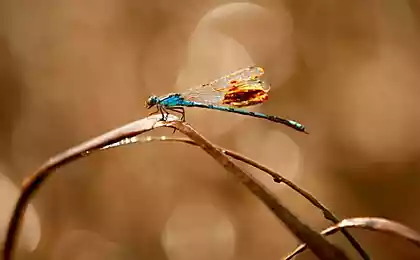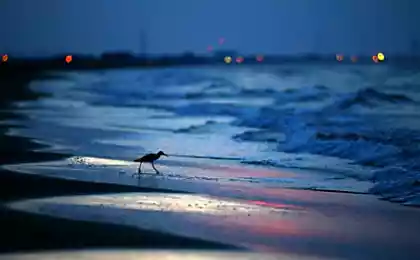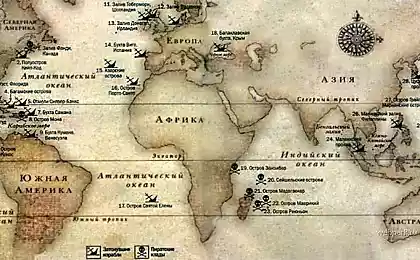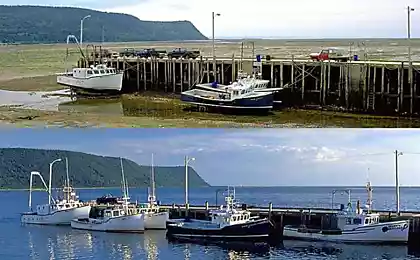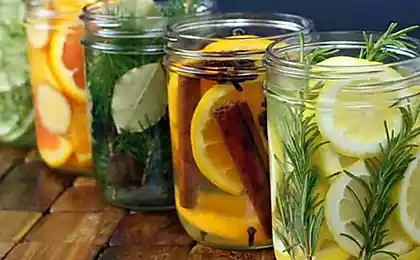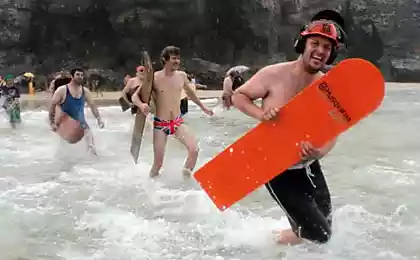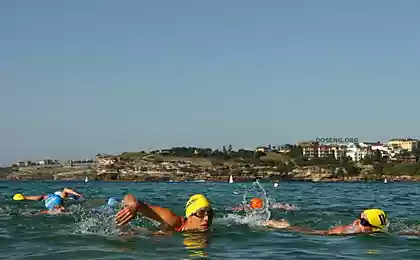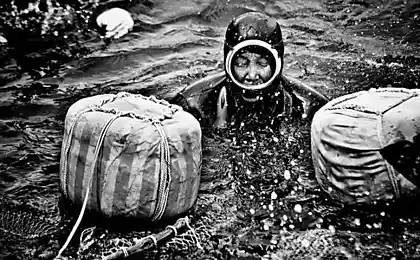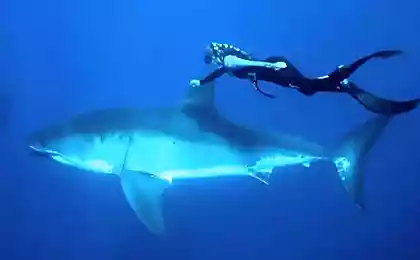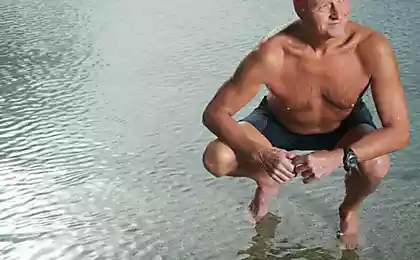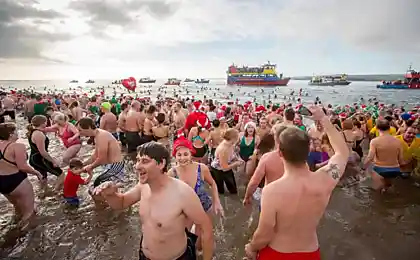1048
Gulf of Mexico (20 photos)
Environmental disaster in the Gulf of Mexico continues. Numerous attempts to stop the oil leak proved futile. Oil continues to flow into the bay. Animals are dying. Environmentalists from the mission "Pelican" who conduct research in the region, discovering at great depths giant accumulations of oil, the depth reaches 90 meters.
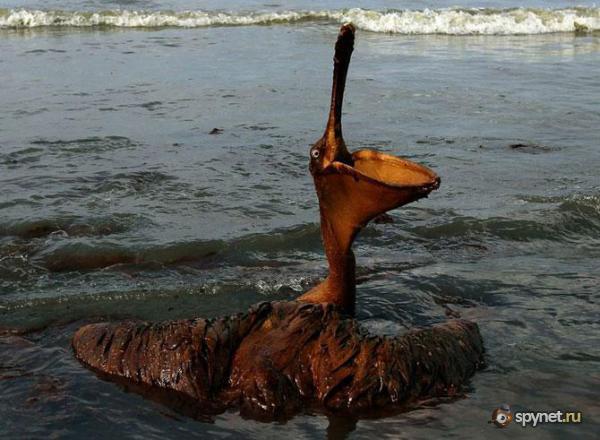
The brown pelican covered with a thick layer of oil floating in the surf off the coast of East Grand Terre, Louisiana.
"Deep-spots" are dangerous because they deplete the oxygen required for living organisms. Now the level has dropped by thirty percent. "If this continues after a couple of months, the flora and fauna of the Gulf may die," - say environmentalists.
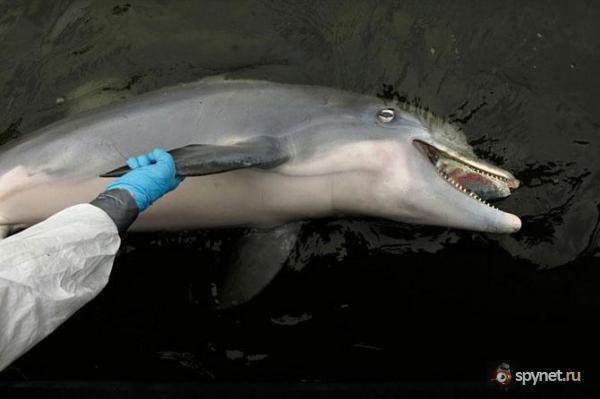
Biologist Mandy Tamlyn from the Department of Wildlife and Fisheries Louisiana pulls the body out of the water dolphin on the shore of the island of Grand Isle, Louisiana. Vskroyut corpse to determine the exact cause of death.
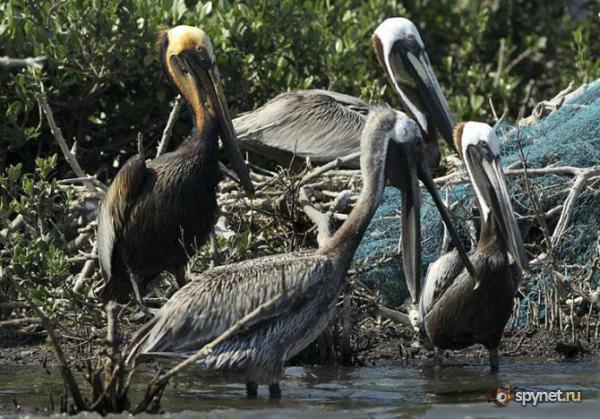
American Brown Pelican (left) stands next to his friendly fellow on an island in Barataria Bay. On this island, numerous colonies of nesting birds. There are thousands of brown pelicans, herons and roseate spoonbill, many of which are currently affected by the oil spill.
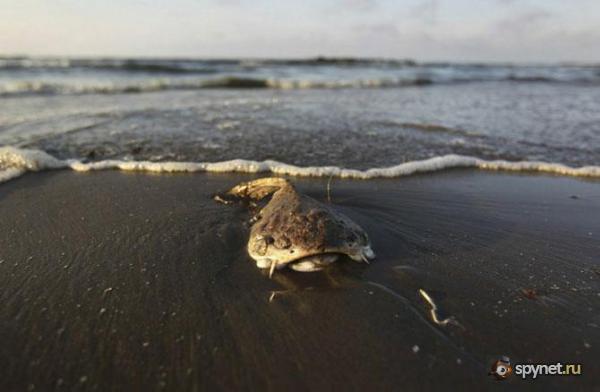
Dead fish on the beach of the island of Grand Isle, Louisiana. The company "British Petroleum" uses chemicals - the so-called dispersants which cleave oil. However, their use leads to poisoning of water. Dispersants are destroying the blood system of fish, and they die from excessive bleeding.

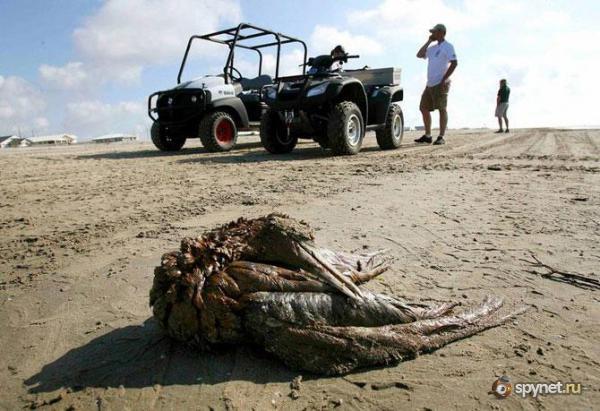
Covered in oil corpse northern gannets on the beach of the island of Grand Isle, Louisiana. Coast State first met with the oil film and the most affected by this disaster.

A bird flies over the oil slick in the Gulf of Mexico off the island of East Grand Terre, which is located off the coast of Louisiana. The amount of oil that is in the Gulf at depths several times higher than the one that rises to the surface of the water.
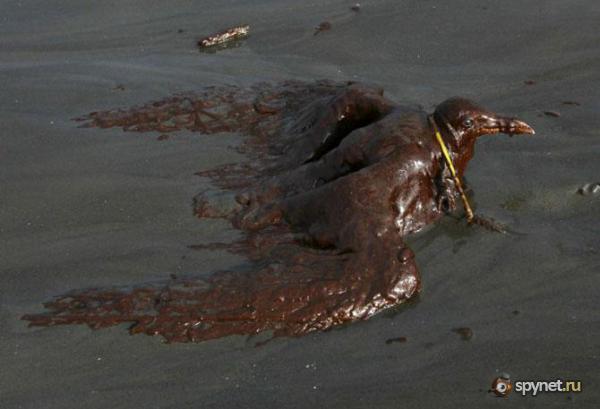
Covered with a thick layer of oil Gull Gull swinging on the Atlantic waves in the surf off the island of East Grand Terre, Louisiana.
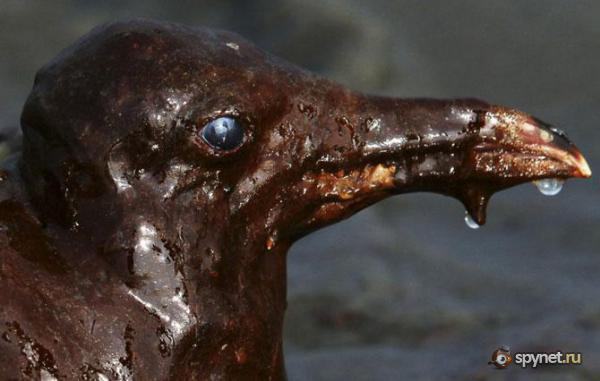
The company "British Petroleum" prohibits workers in the press spread pictures of dead animals.
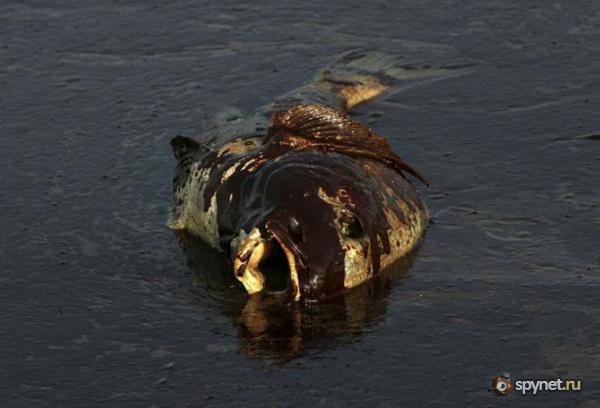
Oil-coated dead fish floating off the coast of East Grand Terre June 4, 2010 near East Grand Terre Island, Louisiana. The fish eat the infected due to the use of dispersants plankton and the food chain toxins spread everywhere.
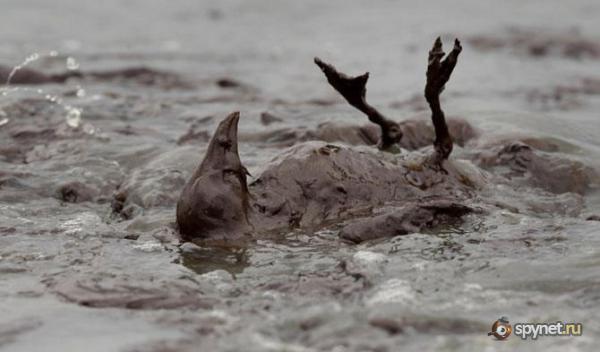
Avian corpse in the oil floating in the surf near the island of East Grand Terre 3 June. Environmentalists believe that affected millions of different migratory birds that spend the winter on the shores of the Gulf of Mexico, and the decline in the population of sea turtles, bluefin tuna and other marine species will hit the entire ecosystem of the Atlantic Ocean.
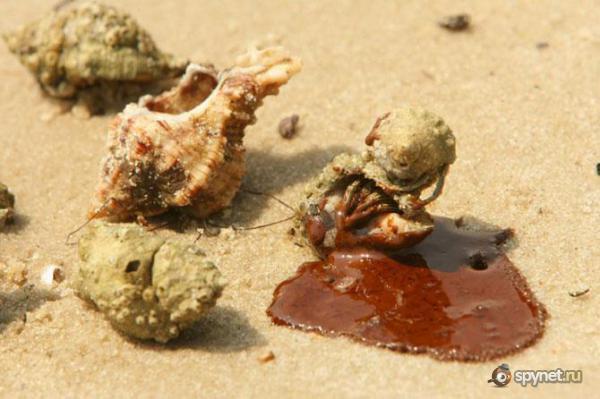
Hermit crabs in a reddish-brown oil on the coast of Dauphin, Alabama. It is expected that the total elimination of the accident will be possible only by August, and clean up the Gulf of Mexico oil may drag on for years.
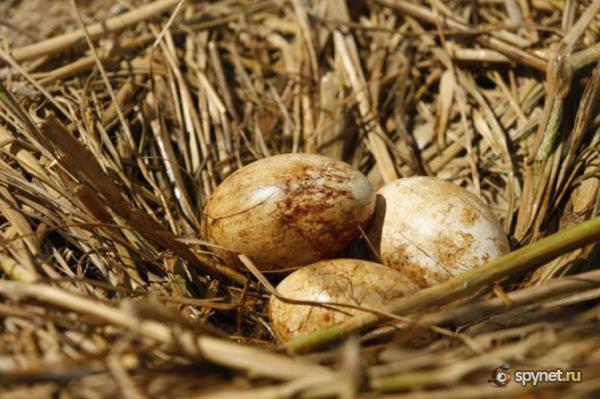
Pelican eggs stained with oil.
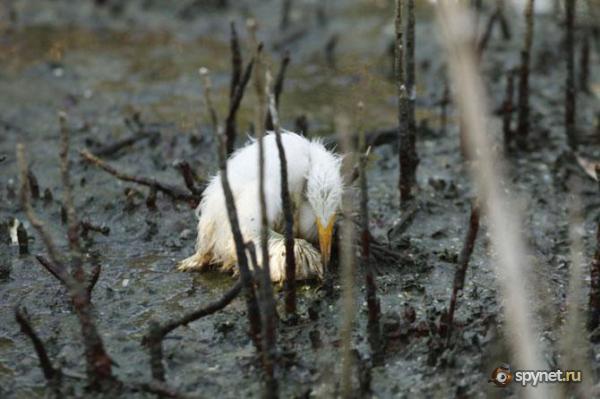
Dying heron chick sitting in the mangroves on the island in Barataria Bay.
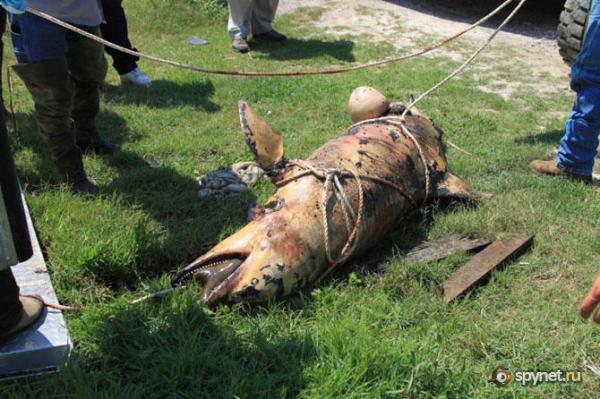
Oil-coated body of a dead dolphin lying on the ground in Venice, Louisiana. This dolphin was noticed and picked up during a flyby of the south-western region on the Mississippi River.
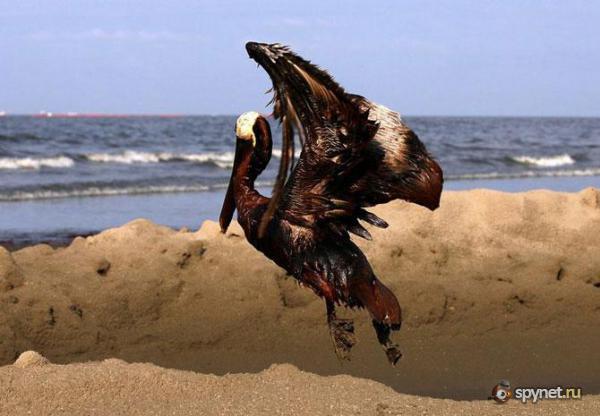
In Louisiana, the birds die en masse. Environmentalists are trying to save injured birds - survivors, mostly pelicans, urgently taken to the rehabilitation center veterinarian.

Now oil has collected on the beaches of Florida. US authorities have banned fishing in new areas. Already one third of closed fishing areas in the US Gulf of Mexico.
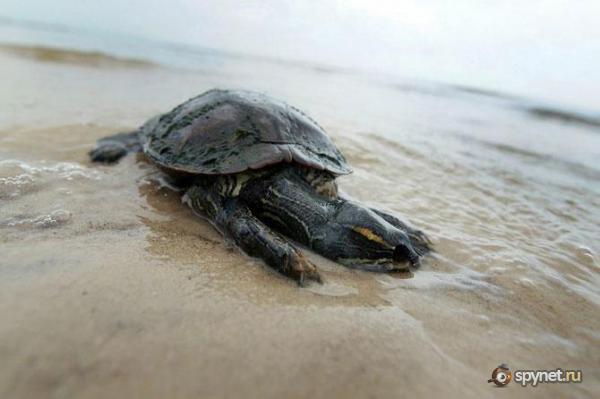
Dead turtle lies on the shore of the Bay St. Louis, Mississippi.
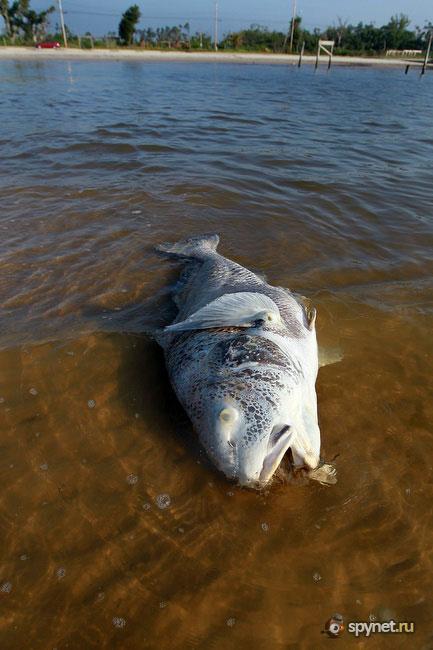
Dead croaker in the surf on the beach in Waveland, Mississippi.
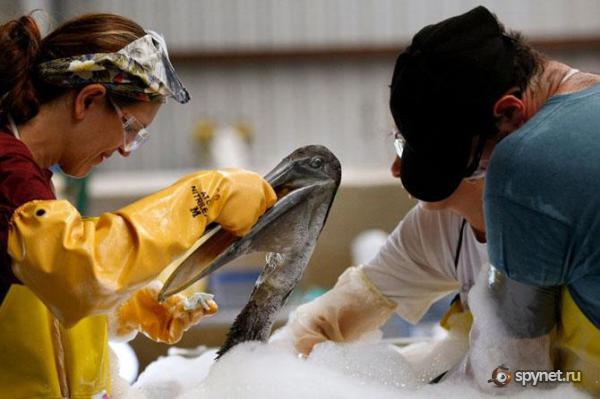
Danin Birtel, left, of the Center for the study of birds and rescue "Tri-State", Patrick Hogan, right, of the International Research Center to save the birds, and Christina Shillesi wash soiled with oil pelican in Buras, Louisiana, June 3. In the center for victims of oil pollution are provided for washing tanks, special drying room and a small pool in which to re-learn to swim bird, narrowly escaped death.

The brown pelican covered with a thick layer of oil floating in the surf off the coast of East Grand Terre, Louisiana.
"Deep-spots" are dangerous because they deplete the oxygen required for living organisms. Now the level has dropped by thirty percent. "If this continues after a couple of months, the flora and fauna of the Gulf may die," - say environmentalists.

Biologist Mandy Tamlyn from the Department of Wildlife and Fisheries Louisiana pulls the body out of the water dolphin on the shore of the island of Grand Isle, Louisiana. Vskroyut corpse to determine the exact cause of death.

American Brown Pelican (left) stands next to his friendly fellow on an island in Barataria Bay. On this island, numerous colonies of nesting birds. There are thousands of brown pelicans, herons and roseate spoonbill, many of which are currently affected by the oil spill.

Dead fish on the beach of the island of Grand Isle, Louisiana. The company "British Petroleum" uses chemicals - the so-called dispersants which cleave oil. However, their use leads to poisoning of water. Dispersants are destroying the blood system of fish, and they die from excessive bleeding.


Covered in oil corpse northern gannets on the beach of the island of Grand Isle, Louisiana. Coast State first met with the oil film and the most affected by this disaster.

A bird flies over the oil slick in the Gulf of Mexico off the island of East Grand Terre, which is located off the coast of Louisiana. The amount of oil that is in the Gulf at depths several times higher than the one that rises to the surface of the water.

Covered with a thick layer of oil Gull Gull swinging on the Atlantic waves in the surf off the island of East Grand Terre, Louisiana.

The company "British Petroleum" prohibits workers in the press spread pictures of dead animals.

Oil-coated dead fish floating off the coast of East Grand Terre June 4, 2010 near East Grand Terre Island, Louisiana. The fish eat the infected due to the use of dispersants plankton and the food chain toxins spread everywhere.

Avian corpse in the oil floating in the surf near the island of East Grand Terre 3 June. Environmentalists believe that affected millions of different migratory birds that spend the winter on the shores of the Gulf of Mexico, and the decline in the population of sea turtles, bluefin tuna and other marine species will hit the entire ecosystem of the Atlantic Ocean.

Hermit crabs in a reddish-brown oil on the coast of Dauphin, Alabama. It is expected that the total elimination of the accident will be possible only by August, and clean up the Gulf of Mexico oil may drag on for years.

Pelican eggs stained with oil.

Dying heron chick sitting in the mangroves on the island in Barataria Bay.

Oil-coated body of a dead dolphin lying on the ground in Venice, Louisiana. This dolphin was noticed and picked up during a flyby of the south-western region on the Mississippi River.

In Louisiana, the birds die en masse. Environmentalists are trying to save injured birds - survivors, mostly pelicans, urgently taken to the rehabilitation center veterinarian.

Now oil has collected on the beaches of Florida. US authorities have banned fishing in new areas. Already one third of closed fishing areas in the US Gulf of Mexico.

Dead turtle lies on the shore of the Bay St. Louis, Mississippi.

Dead croaker in the surf on the beach in Waveland, Mississippi.

Danin Birtel, left, of the Center for the study of birds and rescue "Tri-State", Patrick Hogan, right, of the International Research Center to save the birds, and Christina Shillesi wash soiled with oil pelican in Buras, Louisiana, June 3. In the center for victims of oil pollution are provided for washing tanks, special drying room and a small pool in which to re-learn to swim bird, narrowly escaped death.





